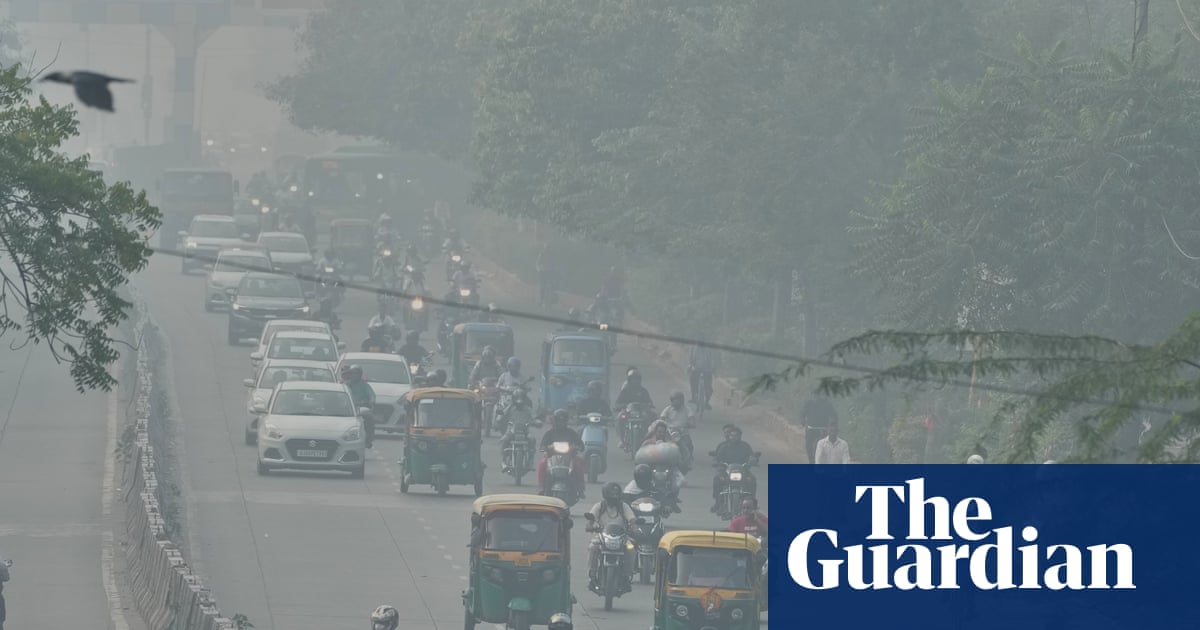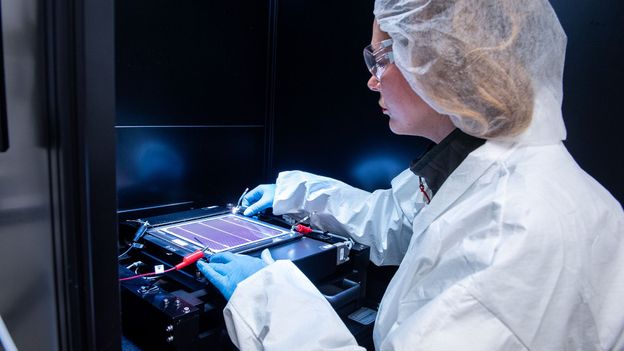- Arvind's Newsletter
- Posts
- Arvind's Newsletter
Arvind's Newsletter
Issue No. #1200
1.Delhi awakes to a toxic haze after Diwali as pollution season begins: The Guardian
Air pollution in New Delhi hit a five-year high this week, as Diwali fireworks combined with farming fires to shroud the city in a toxic haze.
Those in the most polluted city in the world once again found themselves breathing dangerously toxic air that fell into the “severe” category on Tuesday morning.
Part of Delhi showed an air quality index (AQI) of more than 500, which is 10 times higher than the level deemed healthy by the World Health Organization. In some areas, levels of PM2.5 and PM10 – the toxic particles causing pollution – recorded peaks of 1,800, which is 15 to 20 times higher than those deemed healthy.
2.Global Banks Bet Billions on India Amid US Credit Jitters: Bloomberg
A spate of billion-dollar deals for Indian banks has thrust the country’s financial sector into the global spotlight, at a time when US credit losses and trade tensions have rattled investors globally.
Over the weekend, Emirates NBD Bank PJSC said it plans to invest $3 billion in RBL Bank Ltd., marking the biggest foreign investment in India’s banking sector. Earlier this month, Abu Dhabi’s International Holding Co. PJSC inked a deal to buy into Sammaan Capital Ltd. for about $1 billion, while Sumitomo Mitsui Financial Group Inc.’s banking unit in May agreed to pay $1.6 billion for 20% of Yes Bank Ltd.
All told, about $15 billion of deals involving financial services targets in India have been struck this year, data compiled by Bloomberg show, as global investors scour for opportunities in one of the world’s fastest-growing major economies. This builds on the momentum of prior years to invest in lenders, insurance and fintech players.
3.India nears deal to slash US tariffs on Indian imports to 15%-16%, Mint reports
India and the United States are nearing a long-stalled trade agreement that would reduce U.S. tariffs on Indian imports to 15% to 16% from 50%, India's Mint reported on Wednesday citing three people aware of the matter.
The deal, which hinges on energy and agriculture, may see India gradually scale back its imports of Russian crude oil, Mint reported. India may also allow the US to export more non-genetically modified American corn and soymeal, according to the report.
An agreement may be announced when President Donald Trump and Prime Minister Narendra Modi possibly meet at the Association of Southeast Asian Nations summit in Malaysia, the newspaper said. The Asean Leaders Summit is scheduled in Kuala Lumpur from Oct. 26 to 28.
4.Over 40 GW of RE projects in process of signing power purchase pacts: Business Standard
With over 40 gigawatt of renewable energy projects being in advanced stages of signing power purchase pacts, India's non-fossil fuel based power generation capacity is soon to reach 300 GW, an official statement said on Wednesday.
As on September 30, India's non-fossil fuel based capacity stood at 256 GW including 50 GW of large hydro and 8.78 GW nuclear power.
The additional projects will take the country's total non-fossil fuel based electricity generation capacity to around 300 GW, adding to the goal of having 500 gigawatt (GW) of renewable capacity by 2030.
5.From $250 million to $2 billion: India’s role in global aerospace supply chain grows: Economic Times
Global aerospace companies are increasingly turning to India for sourcing, driving rapid growth in the country’s aircraft component sector, according to The Times of India. Domestic firms are expanding their operations, moving from basic manufacturing to higher-value production, while exploring acquisitions. Strong order books have also boosted revenues across the sector.
The industry is preparing to raise around Rs 5,700 crore through initial public offerings in the coming months. Investor appetite for high-growth companies, coupled with a strong equity market, is supporting these plans. Unlike sectors such as textiles, gems, and auto parts, which face US import duties of up to 50%, aero-components attract tariffs of just 25%, making them less affected by trade restrictions.
6.The Under Seven Minute Louvre Jewelry Heist
A team of robbers made off with ‘priceless’ jewelry from the Louvre , France’s interior minister said. Reports suggest nine pieces—including jewels owned by Emperor Napoleon—were taken.
At 9:30 am local time, three or four thieves approached the exterior of the building where renovation work was taking place. They used a lift mechanism on a truck and an angle grinder to get into the first floor. They then broke two display cases in the museum’s Apollon wing, which houses French crown jewels, stealing the loot and fleeing on motor scooters. The raid lasted under seven minutes. Some jewelry was recovered nearby; the rest is lost as of this writing. Authorities have closed the museum to visitors while their investigation continues.
After an estimated $100 million worth of jewels were stolen at the Louvre in Paris, the museum’s director was summoned to appear before French lawmakers amid the ongoing investigation and manhunt.
The Louvre is the world’s most-visited museum with up to 30,000 daily visitors. The museum's most famous heist was the “Mona Lisa" theft in 1911.
7.Sanae Takaichi is Japan’s New Prime Minister, and She’s a Heavy Metal Drummer and hard-line conservative: New York Times
Sanae Takaichi has become the first woman to secure Japan’s top leadership role, overcoming the nation’s typically low female political representation. She now faces a range of challenges from persistent inflation to a tense security environment and simmering domestic political instability.
She secured 237 votes in the more powerful lower house, four more votes than needed to confirm her victory. Shortly after that result, she proceeded to win a run-off vote in the upper house. In addition to forming a cabinet, Takaichi will next week greet US President Donald Trump when he visits Japan.
Her choice as leader is a bet by the ruling Liberal Democratic Party that a swing back to the right will attract the younger voters who have flocked to smaller populist outfits, including the arch-conservative Sanseito party. Takaichi is known as a pro-stimulus conservative and energetic nationalist, who’s drawn comparisons with Britain’s former Iron Lady Margaret Thatcher.
8.OpenAI launches Atlas browser to compete with Google Chrome: TechCrunch
OpenAI announced Tuesday the launch of its AI-powered browser, ChatGPT Atlas, a major step in the company’s quest to unseat Google as the main way people find information online.
The company says Atlas will first roll out on macOS, with support for Windows, iOS, and Android coming soon. OpenAI says the product will be available to all free users at launch.
Browsers have quickly become the AI industry’s next battleground. While Google Chrome has long dominated the space, there’s a sense that AI chatbots and agents are fundamentally changing how people get work done online. A handful of startups have tried to capture this by launching AI-powered browsers of their own, such as Perplexity’s Comet and The Browser Company’s Dia. Google and Microsoft have also tried to update Chrome and Edge, respectively, with AI-powered features to make their legacy products stand out.
9.Scientists invent eye implant to help blind patients see again: Financial Times
Scientists have invented an eye implant to help blind patients see again by partly restoring central vision crucial to reading and other everyday tasks.
The device helped 81 per cent of trial participants suffering from advanced age-related macular degeneration (AMD) to achieve clinically meaningful improvements in their vision, according to research published in the New England Journal of Medicine on Monday.
The technology, which targeted a form of AMD known as geographic atrophy, is part of an increasing drive to make prosthetic implants for organs, including the brain, to restore lost physical abilities. Read Gift Article.
10.Perovskite: The 'wonder material' that could transform solar: BBC
Some argue advances in perovskite solar cells mean we are on the brink of the next solar energy revolution. But it all depends on how they hold up in the real world.
Inside a lab on the outskirts of Oxford, UK, sample solar photovoltaic (PV) cells are stacked up waiting to be put through various tests. One researcher uses an electron microscope to scan and analyse the cells for impurities that could impact efficiency. Another measures cells' response to changes in the light spectrum.
The lab is run by Oxford PV, a spin-off from Oxford University, one of several start-ups around the world developing what some argue is the game-changing next generation of solar power: tandem perovskite solar cells.
The technology combines silicon, the material currently used in solar photovoltaics (PV) in panels across the world, with perovskite materials to massively increase the efficiency of solar panels' conversion of sunlight to electricity.








